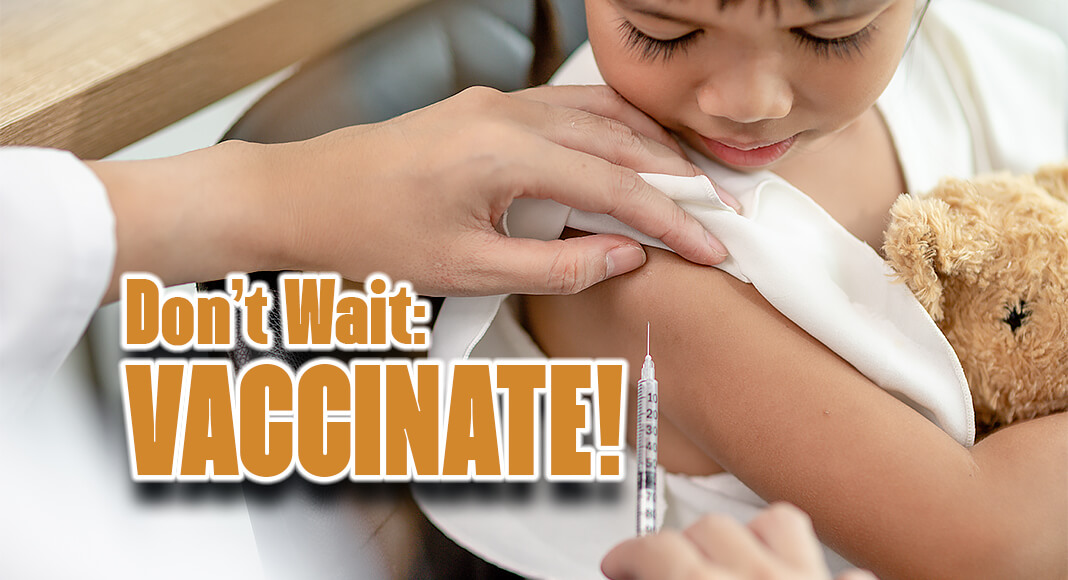
Mega Doctor News
By Children’s Hospital Los Angeles
Newswise – Vaccine misinformation has gone mainstream—a post-pandemic reality that is putting more children at risk of exposure to potentially serious vaccine-preventable diseases like measles.
“The villain here is the disease, not the vaccine,” says Children’s Hospital Los Angeles pediatrician Colleen Kraft, MD. “As we’re seeing increasing number of measles cases in this country, a baby’s biggest threat is the disease.”
As of January 2024, eight states, including California, have reported new cases of measles, causing the Centers for Disease Control and Prevention (CDC) to issue a health alert to pediatricians nationwide.
A 2023 CDC report reveals that 92% of U.S. children have been vaccinated against measles, mumps and rubella—called the MMR vaccine—which is under the federal target of 95%.
Creating Community Immunity
“The threshold for community immunity against measles is high—95% to 97% of the population must be immunized before it can protect those who aren’t immunized or can’t be immunized because they’re too young or their immune systems too vulnerable, such as kids with cancer,” says Dr. Kraft, a former president of the American Academy of Pediatrics.
Measles is highly contagious—so contagious that one person infected by measles can infect nine out of 10 of their unvaccinated close contacts.
About half of the parents whom Dr. Kraft sees lately ask her about delaying vaccines or breaking up the vaccines. “There are medical concerns about delaying the first MMR shot,” says Dr. Kraft.
The combined MMR vaccine has two advantages, says the World Health Organization. It provokes a sufficient immune response in children simultaneously for all three infections and prevents children from needing six separate injections.
The CDC recommends all children get two doses of MMR, starting with the first at 12 through 15 months, and the second at 4 through 6 years. Children can receive the second dose earlier as long as it’s at least 28 days after the first.
Protection When It’s Needed
Delaying or spreading out a vaccine leaves a child unprotected when they need that protection the most. Babies face the biggest risk, as their immune systems are not fully developed at birth. Vaccines help the immune system learn how to defend against germs.
Common complications of measles include ear infections and diarrhea. But measles also can have more severe effects. Children under 5 years of age are more likely to experience swelling of the brain (encephalitis), as well as pneumonia, which affects as many as 1 out of every 20 children with measles and is the most common cause of death from measles in young children.
California’s vaccination rates had been growing steadily since 2015 but did a nosedive in the months after COVID-19 closed schools. In 2020, the state’s kindergarten vaccination rate was 92.8%. By 2021, the vaccination rate rose to 94%, only to drop again two years later.
Why the downward trend? Dr. Kraft points to two reasons, the first being the pandemic. “We’re still seeing kids who stopped coming in to CHLA in 2020 and are behind on a lot of immunizations, including MMR,” she says.
The second reason—vaccine hesitancy—is being fueled by social media-driven anti-vaccine sentiment and misinformation. “We speak with parents who are afraid to get vaccines, afraid to get more than one vaccine at a time, and afraid of vaccines with two or three components,” says Dr. Kraft.
“These vaccines have all been studied and approved by the CDC,” she adds. Their safety has been extensively researched, along with the timing of their delivery.
Some vaccines can be divided into components and administered separately. Others can’t. Either way, medical professionals don’t recommend it.
“The further we are away from that 95% to 97% community immunity rate,” says Dr. Kraft, “the more likely we are to have a measles outbreak.”










